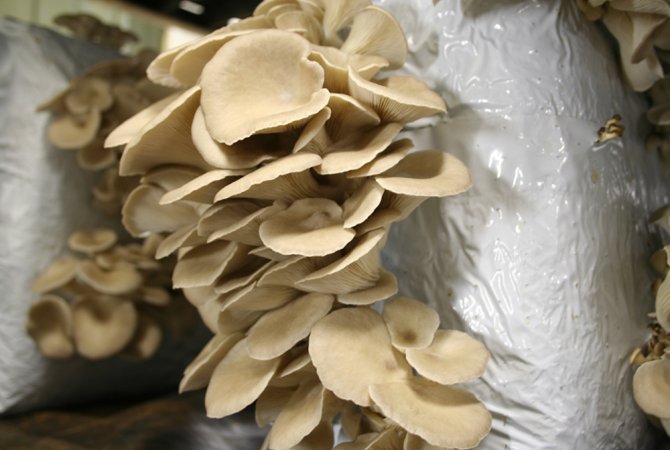
Interview
Bioinformatics for a better understanding of mushrooms
Research associate Brian Lavrijssen uses bioinformatics to decipher the genetics of mushrooms. His work is producing valuable information, for example on the development of new strains with better functional traits. and on better ways to protect breeders' intellectual property.
It is very easy to claim that you are placing a new strain on the market: you buy a punnet of oyster mushrooms in the supermarket, create a culture with them and start propagating. With the test that we have developed, we can show whether or not it is indeed a new variety.
A molecular biology analyst at the time, Brian Lavrijssen made the switch to bioinformatics in 2013. “There has been a huge increase in the amount of data available over the past few years. It got to the point where there were too few people at Wageningen University & Research to analyse it all. I was interested in bioinformatics and took additional training in this field. In the mushroom research group I am deciphering the genetics of mushrooms to gain a better understanding of how they work.”
For researchers, mushrooms have a great advantage over plants, he says: “In the mycelium of fungi, the nuclei of both parents coexist without fusing. This means that you can always refer back to the genomes of the individual parents. With plants, you first have to find out which genetic material comes from which parent. There is none of that head scratching with mushrooms, so you can find answers to research questions more quickly.”
Sporeless oyster mushroom
One of the mushrooms he is studying is the oyster mushroom, an edible mushroom that is sold in every supermarket these days. “The question we were asked was: can we develop a test that shows whether the intellectual property of the Spoppo is being infringed? This is a sporeless oyster mushroom which we have developed. It is very easy to claim that you are placing a new strain on the market: you buy a punnet of oyster mushrooms in the supermarket, create a culture with them and start propagating. With the test that we have developed, we can show exactly where in the mushroom the genetic traits of both parents are rearranged. When a spawn supplier creates a new variety, this takes place in other places in the genome. If these locations in the new variety on the market are an exact match for an existing variety, then it’s clearly a case of theft.”

Lavrijssen is now working on a similar test for another popular strain of oyster mushroom, the Allerpo. He hopes that this will lead to better protection of intellectual property in mushroom cultivation. “This is currently making breeders reluctant to invest in new varieties. Testing paves the way for innovation in the sector.”
Lignin degradation
Another species Lavrijssen is studying is Ceriporiopsis. This member of the extensive Wageningen fungus collection is used to break down lignin in woody plants: “We are looking for a variant that does this best, which would enable the nutritional value of animal feed to be improved, for example. I am studying the genetic variation between all the strains of this species we have in our collection. And I am also looking at how the genetic information is redistributed in the offspring after crossing. I can then see how easy or difficult it would be to combine desired traits in one individual. If we know which parts of the genome are involved in the desired traits and which parent has to supply which piece of information, we can predict which offspring will perform well or less well, so we don't have to test them all in the lab first.”
His field is developing at a dizzying rate: “When I started out as a research associate in 1997, we would study the same point in the genome in about 10 strains, and that would take all day. With modern sequencing technologies, we can map the entire genome of hundreds of strains at once. The difference is massive, and things will only get faster and easier in the future. But lab work is still needed to actually evaluate the knowledge from the bioinformatics.”